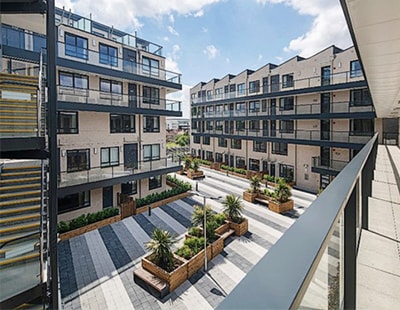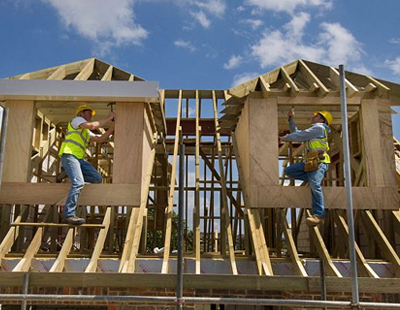The research found that the number of active listings on Airbnb in the UK increased by a third (33%) to 223,000 in 2018 from 168,000 in 2017.
Unsurprisingly, London is home to the largest market in the UK, with the number of active listings rising four-fold from 18,000 in 2015 to 77,000 in 2019.
Edinburgh, meanwhile, has seen growth in short-term lets triple, with 32,000 active listings in the Scottish capital in 2019, up from 11,000 in 2016. This, in part, has led to the Scottish Government taking action to curb the short-let rental market north of the border.
The report highlighted that 16% of adults have let out all, or part, of their property at least once in the last two years – equating to 8.2 million people.
This suggests 4.5 million properties, the equivalent of 19% of the UK’s housing stock, have been used for short-term lets.
The findings also revealed that 16% of landlords only offer short-term tenancies and a further 7% offer both short and long-term lets.
Of the overall landlord population, 2.7% have switched from long-term tenants to short-term lets, equating to 46,000 properties.
The capital witnessed a larger share of people (4%) who stated they had offered short-term lets on properties they previously used for longer-term rentals, with nearly half (46%) of landlords offering short-term lets doing so to enjoy more flexibility in how they use their property. Others (38%) cite the burdensome regulations in the long-term letting market and what many have seen as an attack on the private rented sector in the form of measures such as the extra 3% stamp duty surcharge and the changes to mortgage interest tax relief.
Meanwhile, 27% were encouraged to move to short-term lets because they thought they could achieve higher rents.
Some 10% of landlords say they are likely to consider a switch to short-term lets, with landlords with more than five properties in their portfolio considerably more likely to reduce their offering of long-term lets and replace them with the short-term letting model instead.
Based on the number of landlords considering a move to short-term lets, up to 230,000 properties could be added to this already crowded marketplace.
If this included landlords who stated they were ‘fairly likely’ to make the move, the number of properties would increase to 470,000.
While many enjoy the flexibility and affordability offered by Airbnb homes, there has been significant opposition from those who say it has too big an impact on rental supply – which could disproportionately impact vulnerable or low-income tenants, who are especially reliant on the private rented sector.
“The growth in short-term lets is particularly concerning for the traditional private rented sector,” David Cox, the chief executive of ARLA Propertymark, said. “As landlords are continuously faced with increased levels of legislation, it’s no surprise they are considering short-term lets as a chance to escape this. Unless the sector is made more attractive, landlords will continue to exit the market resulting in less available properties and increased rent costs.”
The body issued a series of recommendations to limit the impact of short-term lets, including ensuring a level regulatory and taxation playing field between short-term and long-term lets and considering the introduction of limits on short-term letting activities in areas ‘in which there is a demonstrable impact on private rented housing supply’.
Additionally, campaign group Generation Rent has called for councils across the UK to crack down on Airbnb and other short-let platforms – potentially following the lead of Bristol City Council which recently voted for greater powers to regulate Airbnb and other parts of the sharing economy.
While Airbnb’s growth in the UK seems unstoppable, and the number of properties on its platform ever-increasing, it is also facing more and more of a backlash – not just here, but across the globe.
It says it is already well-regulated, but it is likely to face further questions marks and opposition as its rapid growth continues.
BTR registrations up, plus new schemes aplenty
The latest figures from the National House Building Council (NHBC) show that Build to Rent sector registrations grew to 4,788 in 2019, up from 3,055 the year before and up 281% from 1,257 in 2015.
Since the figures were first taken in 2015, the number of Build to Rent flats completing has expanded every year but one. Last year’s total, however, was the biggest leap yet – up by 57% on 2018’s figures.
Mary-Anne Bowring, managing director at property management company Ringley, says this growth is good news for Britain's renters, ‘as it will help create a more professionalised rental market like what's already available in Germany, the Netherlands and Scandinavia, where institutional landlords have been around for decades and as a result, renting isn't considered a tenure of last resort’.
Franz Doerr, chief executive of deposit alternative firm Flatfair, added: “The rapid increase in Build-to-Rent registrations over the last five years is indicative of a rapidly changing approach to renting in the UK, where service is no longer seen as a premium but instead is a core part of the offer. Making the whole resident experience hassle-free from the start of the tenancy through to the end is a part of that pivot towards service, and with ever-increasing rents across the UK being able to offer residents the chance to move in without onerous upfront rental costs is a key part of that.”
Other figures further back up the growth of this sector – which, while expanding at a rate of knots, still only makes up around 2% of the overall PRS. In the most recent quarterly report from the British Property Federation and Savills, which tracks the progress of Build to Rent schemes across the country, it was revealed that there are now 152,071 homes of this type in the UK, of which 40,181 are complete, 35,415 under construction and 75,475 in planning.
In London, there are a total of 76,408 units, while outside of the capital there are 75,663 units – with places like Manchester and Salford particular regional hotbeds.
And this trend shows no signs of slowing down, with a Build to Rent developer recently revealing its ambition to construct more than 10,000 units in just five years.
Wise Living, part of property management company the SDL Group, says the plans will create up to 100 new jobs across the UK. Over the last year it has announced partnerships with developers Keon Homes and Lovell Homes, as well as £133 million investment from Triple Point and ICG Longbow, but it insists there is ‘significantly more to follow’.
SDL Group said it is focusing its efforts on these strategic partnerships to capitalise on the potential in the growing Build to Rent sector, with Wise Living currently working with 10 developers across the UK and existing developments in Mansfield, Birkenhead, Coventry and Telford.
Andy Deller, director at Wise Living, said: “Since our launch in 2018, we’ve made fantastic progress thanks to the effort of our team and our partners. We’ve had a stream of collaborations and investments that have enabled us to build high-quality BTR properties for people and families right across the UK.”
He added: “The key aim is to deliver on the potential that we have realised and build 10,000 homes and partner with a number of key regional and national developers by the year 2025.”
Legal & General (L&G), one of the major institutional players in the market from the start, recently revealed its latest planned BTR site, known as Chelmer Waterside – which will form part of a major mixed-use development in Chelmsford.
The BTR element will comprise 189 studio, one, two and three-bedroom apartments, 10 minutes’ walk from the city centre, with Legal & General committing £24.5 million to the acquisition and development of the site.
L&G also recently announced that it has exchanged contracts on a new BTR tower – ‘North Tower’ - in Deansgate Square, Manchester, which will offer 276 luxury apartments of one, two and three-bedrooms, across 37 storeys. Amenities will include a two-storey gym, swimming pool, sauna, steam room, fitness studios and a full-size indoor sports hall.
In total, L&G now has 16 UK-wide sites in operation and development, including in Salford, Brighton, Cardiff and Wandsworth.
In Leeds, BTR is also thriving, with 78% of residential developments under construction currently for the BTR market, while in Glasgow the total number of homes completed, in construction or planning grew from 2,909 at the end of Q4 2018 to reach 3,297 by the end of Q4 2019.
BTR developments are increasingly popular in other major regional cities such as Birmingham, Sheffield and Liverpool, as the fastest-growing trend in the property market shows no signs of decelerating.




















Join the conversation
Be the first to comment (please use the comment box below)
Please login to comment